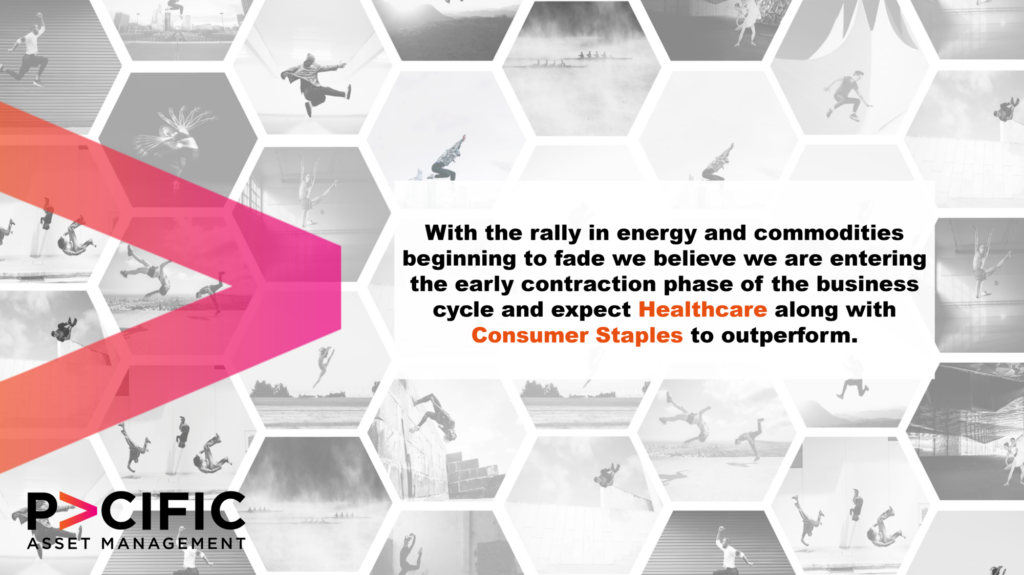As we pass the halfway mark of 2022, global equities are down 12% in GBP, with Q2 offering no respite. Market
volatility remains elevated with ongoing geopolitical concerns, central banks hiking interest rates, inflation printing new highs and weakness in the economy weighing on sentiment. Globally, analysts have been putting through more downgrades than upgrade revisions, however actual earnings estimates in the US and Europe have yet to be revised lower. Looking ahead, there is hope that commodity prices have started to retrace, equity valuations have dropped sharply (albeit not at recession type multiples) and Bullish Sentiment (www.aaii.com) is at a 30+ year low, with many anticipating a weak Q2 reporting season.
Going forward, we expect the Social pillar of ESG to become more prominent in driving sustainable stock returns and corporate sustainability strategies as labour market remains tight and human capital management, through talent attraction and retention, increasingly becomes a point of differentiation. This may come at the expense of the Environmental pillar of ESG which the vast majority of Growth and SRI focused funds have enthusiastically pursued. The objective of the fund is to deliver long-term capital growth and our investment philosophy is tilted towards quality growth at a reasonable price. We see the strong outperformance delivered relative to Growth and SRI indices as evidence that Quality and Growth can deliver even when it is out of favour relative to value.

With the rally in energy and commodities beginning to fade we believe we are entering the early contraction phase of the business cycle and expect Healthcare along with Consumer Staples to outperform. We see Healthcare as one of the few equity segments offering earnings stability and capital return at an appealing valuation. The Longevity & Social Change fund has over 50% of its assets invested in Healthcare, much of which offers; 1) defensive growth (inelastic demand/secular growth through periods of uncertainty); 2) high margins (typically insulated from inflation given agriculture and energy are not significant inputs); and 3) pricing power at undemanding valuations relative to expected growth.
Healthcare has experienced secular growth for several decades due to favourable demographics (ageing and growing middle-class population) and breakthrough innovation. In the US alone, Healthcare expenditures have risen to 16% of total personal consumption wallet from 5% since the 1950s, while Food & Beverages has declined to 8% from 21%. This has translated to Healthcare generating the strongest revenue growth of all sectors since the GFC of 9.0% CAGR (vs. 4.4% S&P 500) and long-term growth rate of 10.6% CAGR (vs. 4.0% S&P 500 since 1994). (source: JP Morgan, 2022)
While rising energy and inflation costs could pose a threat to healthcare spending in the short term, demographic trends, excess savings, and rising wages all suggest otherwise. Based on consensus estimates, Healthcare is expected to continue generating healthy mid-single-digit revenue growth while enjoying tech-like margins. Most Healthcare sub-industries earn margins north of 20% given patent protection and scale, while Biotech (38%) and Pharma (30%) generate among the strongest margins of all S&P 500 industries (in line with or higher than scalable Software and Internet Services). While drug pricing and Healthcare margins are often a target of political rhetoric during elections, we anticipate the upcoming midterm elections should be a positive for the sector if Democrats lose the House, hindering the Biden administrations’ ability to pass new legislation.
The MSCI Consumer Discretionary index declined 25% in Q2, materially underperforming global equities, reflecting concerns over consumer resilience amid high inflation, stagnating real incomes and a persuasively hawkish Fed. A number of earnings misses and outlook downgrades among several bellwethers within the Consumer Staples space such as Target and Walmart added to the gloom. Earnings misses were often attributed to a combination of continued cost pressures, the latest lockdowns in China, late onset of warmer weather and in some cases over-stocking which contributed to discounting. However, consumer weakness is not broad-based, and we see a bifurcation in spending with resilience in the luxury, premium and services space as well as continuation of sector specific secular trends. For example, Petcare is continuing to benefit from a higher degree of pet ownership, premiumisation of the market and low-price elasticity of demand as evidenced by Pets at Home resilient reporting.
The Pacific Longevity & Social Change fund has significant exposure to Consumer Staples and Consumer Discretionary (~30% of the portfolio). Given the multiple supply headwinds and risks to demand in pockets of the Consumer universe we see selectivity as ever more important. Our Consumer stock selection focuses on companies with high gross margins and pricing power which should fare better in a world that is shifting from “an abundance of growth” to relative “scarcity of growth”. When combined with an attractive dividend yield then all the better. Specifically, we would draw attention to funeral services provider Service Corp which continues to experience durable demand. Lululemon and EssilorLuxottica remain confident in their growth outlook, while marine powerhouse Brunswick observes field inventory 50% below historical levels. Brunswick does not expect boat supply to be replenished until 2024/2025 at the earliest. Despite a highly visible growth outlook and downside earnings scenario of between $6/sh to $8/sh, Brunswick trades on a consensus 2023 P/E of 6.8x and EV/EBITDA of 5.6x. (Source: Bloomberg, July 2022)
Companies with exposure to the durable growth offered by the Longevity and Social Change theme continue to present opportunities to invest at reasonable valuations. The tougher economic environment will benefit businesses with strong management and a track record of execution. We remain focused on identifying high quality businesses with proven operating models and strong innovation characteristics. Maintaining conviction in times of stress is likely to pay off once fundamentals overtake short term rotation trends as the driver of performance.



